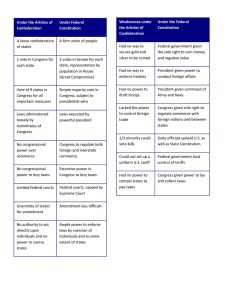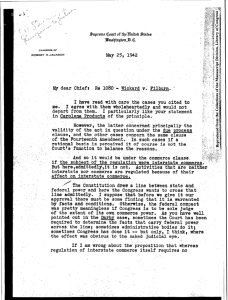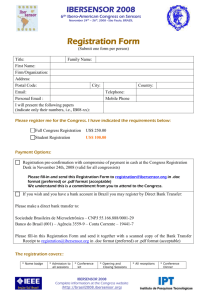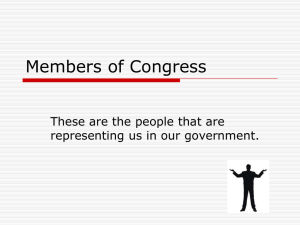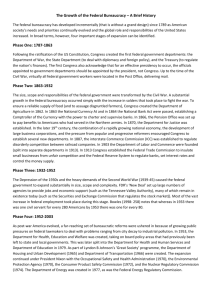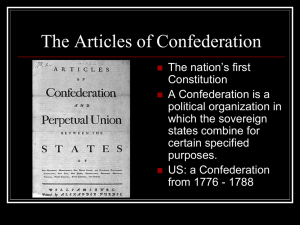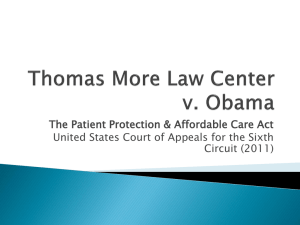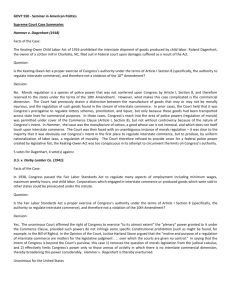Articles Of Confederation
advertisement
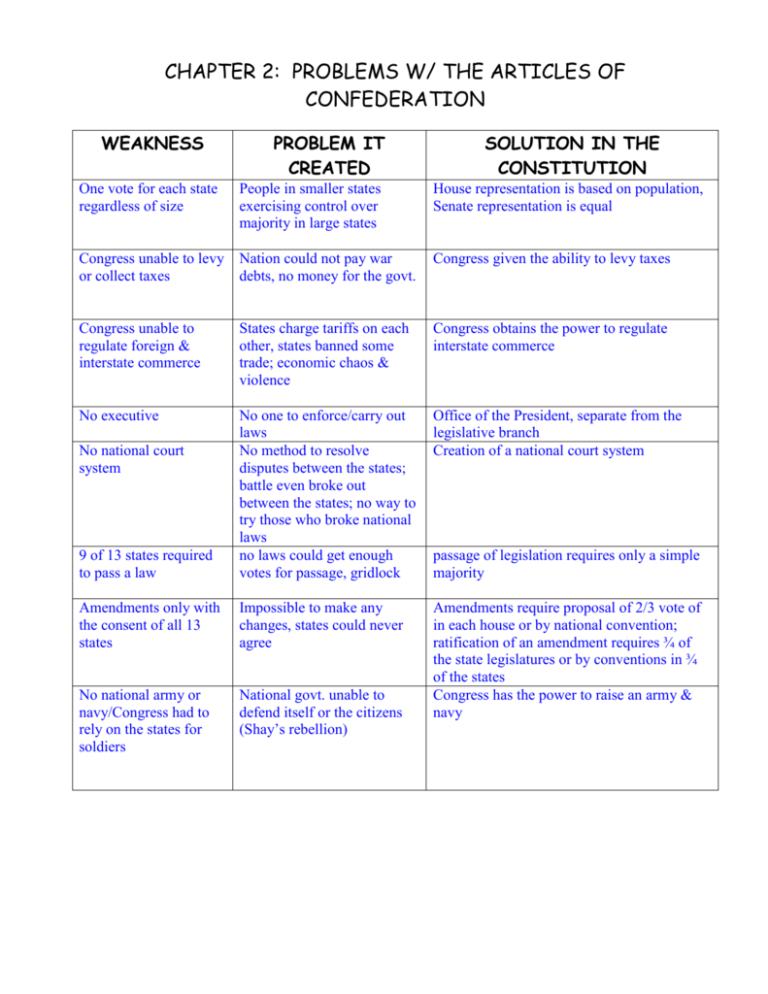
CHAPTER 2: PROBLEMS W/ THE ARTICLES OF CONFEDERATION WEAKNESS One vote for each state regardless of size PROBLEM IT CREATED People in smaller states exercising control over majority in large states SOLUTION IN THE CONSTITUTION House representation is based on population, Senate representation is equal Congress unable to levy Nation could not pay war or collect taxes debts, no money for the govt. Congress given the ability to levy taxes Congress unable to regulate foreign & interstate commerce States charge tariffs on each other, states banned some trade; economic chaos & violence Congress obtains the power to regulate interstate commerce No executive Office of the President, separate from the legislative branch Creation of a national court system 9 of 13 states required to pass a law No one to enforce/carry out laws No method to resolve disputes between the states; battle even broke out between the states; no way to try those who broke national laws no laws could get enough votes for passage, gridlock Amendments only with the consent of all 13 states Impossible to make any changes, states could never agree No national army or navy/Congress had to rely on the states for soldiers National govt. unable to defend itself or the citizens (Shay’s rebellion) Amendments require proposal of 2/3 vote of in each house or by national convention; ratification of an amendment requires ¾ of the state legislatures or by conventions in ¾ of the states Congress has the power to raise an army & navy No national court system passage of legislation requires only a simple majority CHAPTER 2: PROBLEMS WITH THE ARTICLES OF CONFEDERATION WEAKNESS PROBLEM IT CREATED SOLUTION IN THE CONSTITUTION One vote for each state regardless of size Congress unable to levy or collect taxes Congress unable to regulate foreign & interstate commerce No executive No national court system 9 of 13 states required to pass a law Amendments only with the consent of all 13 states No national army or navy /Congress had to rely on the states for soldiers See chart on “Formal & Informal Amendment Process”
